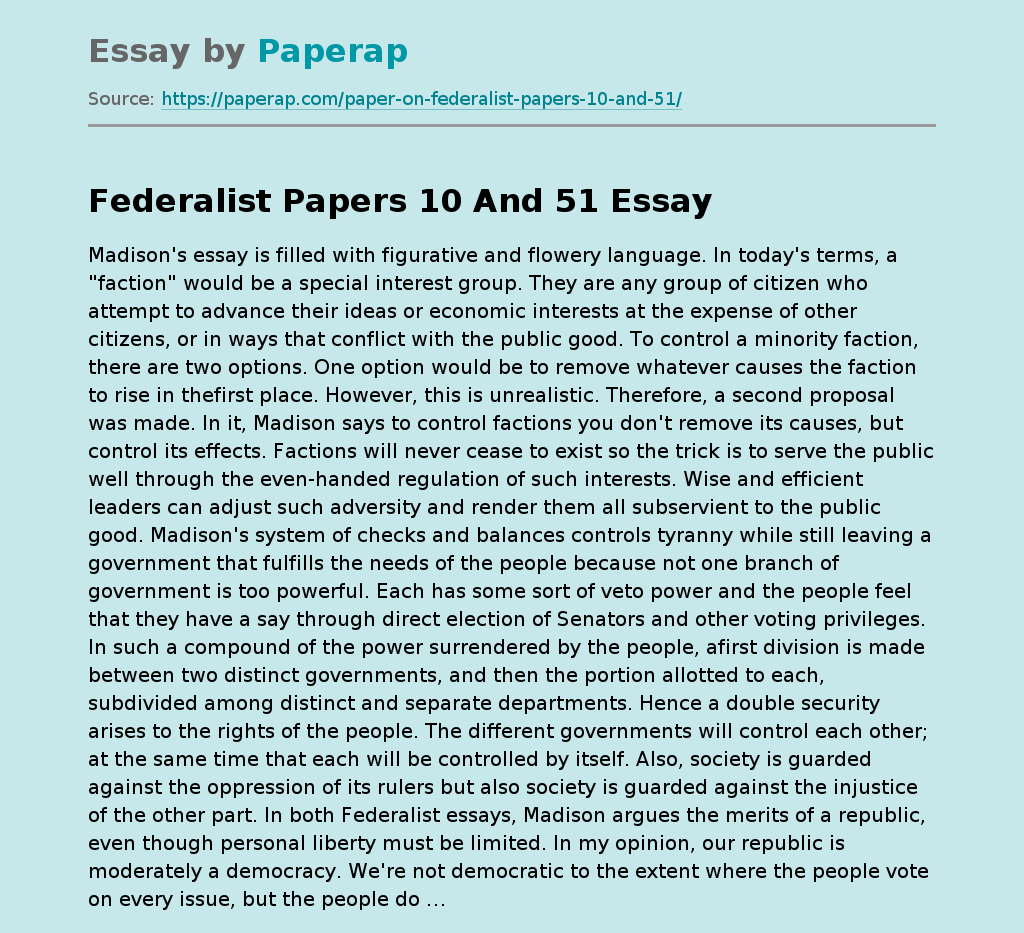James Madison: The Father of the US Constitution and the Bill of Rights
The following sample essay on “James Madison” is about an American statesman. He was the fourth President of the United States, and one of the key authors of the US Constitution and the Bill of Rights.
Madison’s essay is filled with figurative and flowery language. In today’s terms, a “faction” would be a special interest group. They are any group of citizen who attempt to advance their ideas or economic interests at the expense of other citizens, or in ways that conflict with the public good.
To control a minority faction, there are two options. One option would be to remove whatever causes the faction to rise in thefirst place.
However, this is unrealistic. Therefore, a second proposal was made. In it, Madison says to control factions you don’t remove its causes, but control its effects. Factions will never cease to exist so the trick is to serve the public well through the even-handed regulation of such interests.
Wise and efficient leaders can adjust such adversity and render them all subservient to the public good. Madison’s system of checks and balances controls tyranny while still leaving a government that fulfills the needs of the people because not one branch of government is too powerful.
Each has some sort of veto power and the people feel that they have a say through direct election of Senators and other voting privileges. In such a compound of the power surrendered by the people, afirst division is made between two distinct governments, and then the portion allotted to each, subdivided among distinct and separate departments.
Hence a double security arises to the rights of the people.
The different governments will control each other; at the same time that each will be controlled by itself. Also, society is guarded against the oppression of its rulers but also society is guarded against the injustice of the other part. In both Federalist essays, Madison argues the merits of a republic, even though personal liberty must be limited. In my opinion, our republic is moderately a democracy.
James Madison: The Father of the US Constitution and the Bill of Rights. (2019, Dec 05). Retrieved from https://paperap.com/paper-on-federalist-papers-10-and-51/

